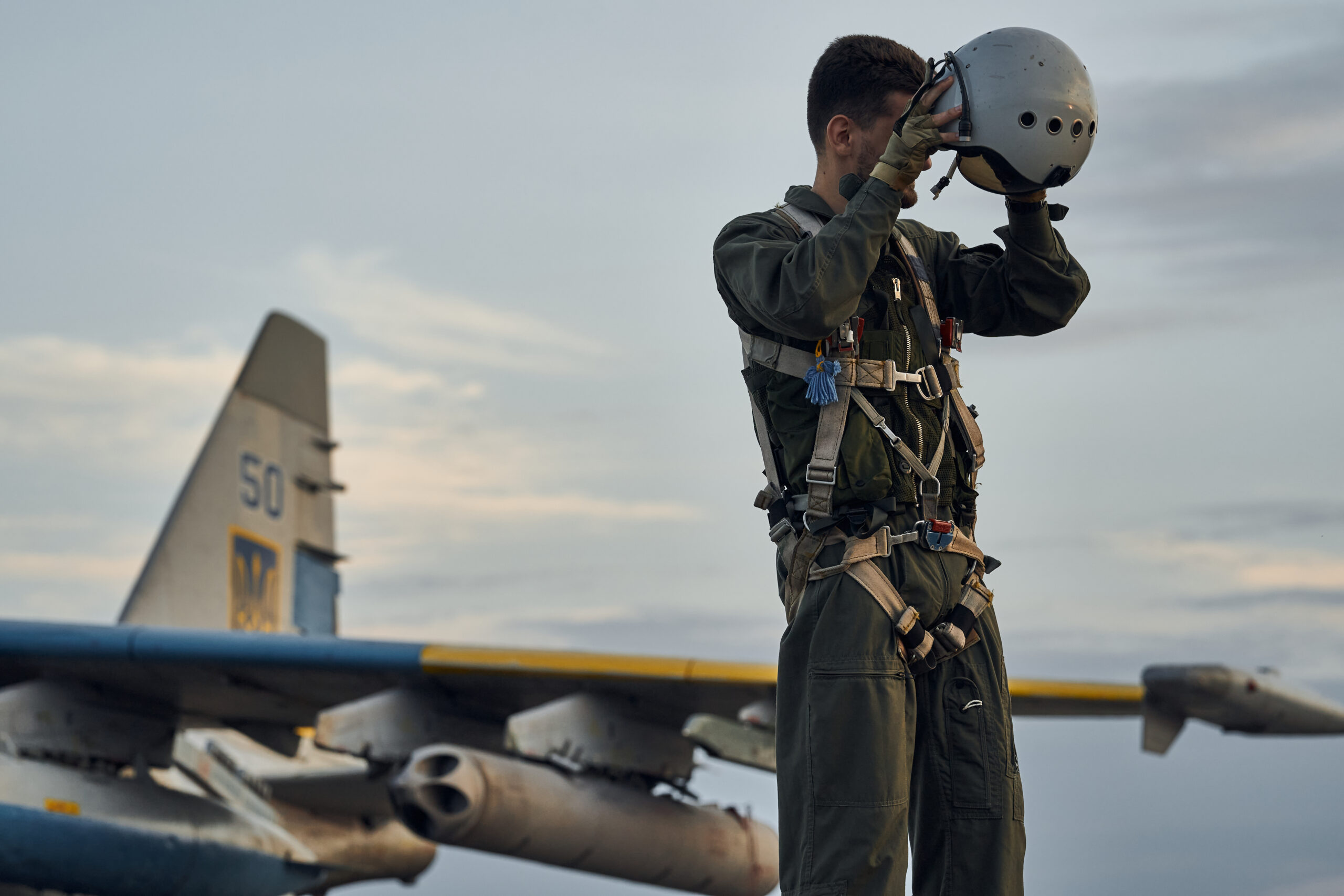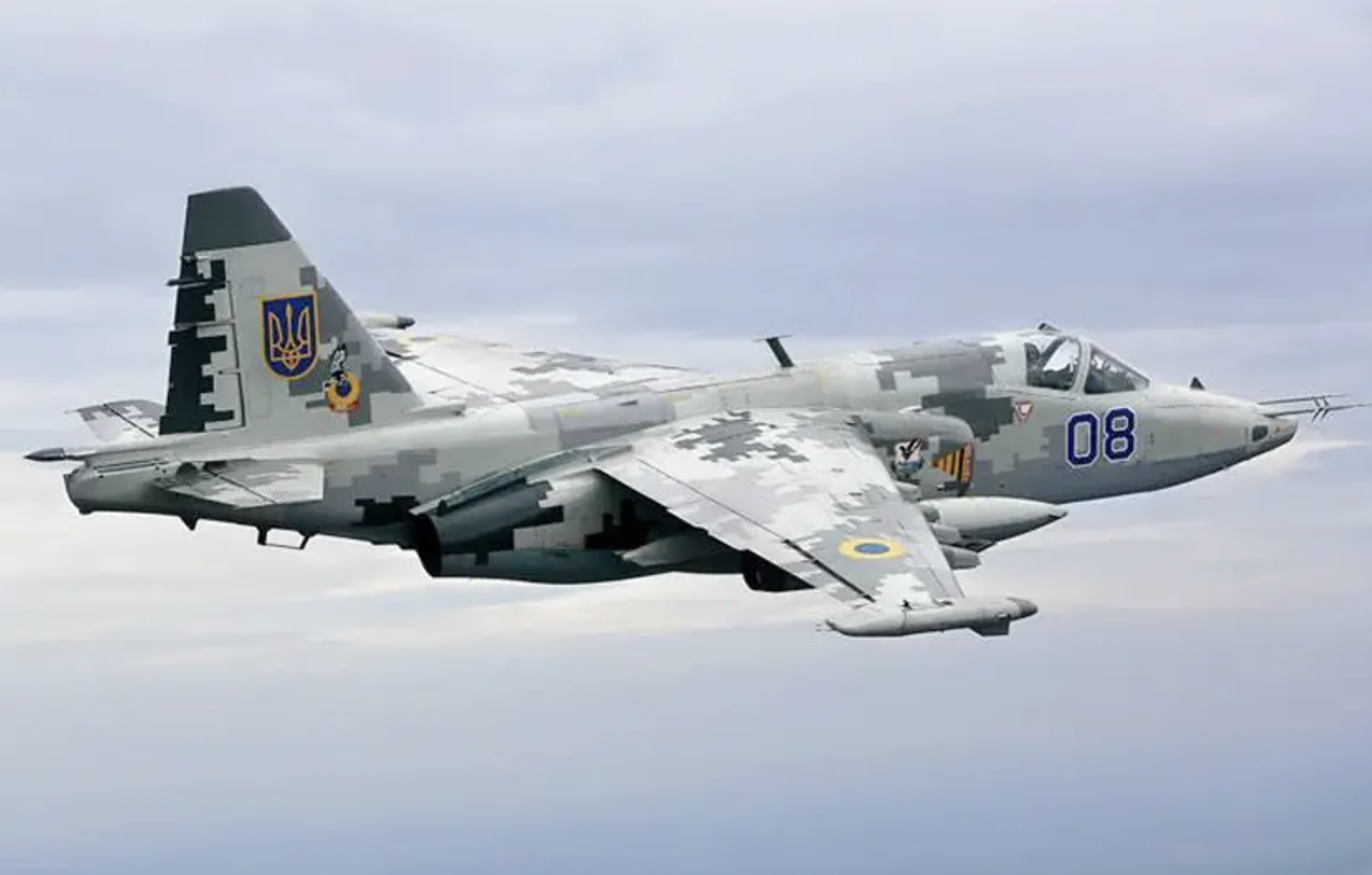A recent video shows a Russian Lancet loitering munition — a type of ‘kamikaze’ drone with an integral warhead that can loiter in a target area, before attacking its chosen target by flying into it and detonating — just blew up Ukrainian Su-25 Frogfoot ground-attack aircraft… Or did it? It turns out the footage is not all that it appears to be at first glance, with the Lancet’s actual target being a remarkably accurate decoy of the aircraft in question.
Dated November 30, the video began to appear on Russian social media channels almost immediately, with these initially reporting it as a successful attack on a genuine Ukrainian Air Force Su-25. The location of the attack is Dolgintsevo, an airbase near Kryvyi Rih in central Ukraine.

The video shows two perspectives, one from the camera aboard the Lancet that actually crashes into its target, the other from a drone observing from a high altitude. It has been reported that the latter drone was an Orlan-series type, a kind that has been used widely in the war in Ukraine, primarily for surveillance.
It’s notable that when first shared by Russian outlets, the video was assumed to show the destruction of a real Su-25. On the one hand, that’s a product of the fact that Russia has previously launched Lancet strikes against Ukrainian Air Force aircraft on bases fairly deep into Ukraine. On the other, the decoy itself is remarkably faithful to the original.
The Su-25 lookalike sits in a blast pen of the kind found widely on Soviet-era airfields. It wears the ‘digital’ gray camouflage scheme that appears widely on Ukrainian Su-25s, especially those that have undergone upgrade or in-depth maintenance. Furthermore, it has blue and yellow panels applied to the leading edges of the wings, a common ID marking used to try and prevent ‘friendly fire’ incidents, as seen in the photo above. The aircraft even has ‘fuel’ tanks on two of its underwing pylons. Perhaps, some parts of the decoy could have been retrieved from an out-of-service jet, adding to overall realism.

A closer inspection, however, reveals that something is ‘wrong’ with the cockpit area, which appears to be a simple tarpaulin rather than glazed panels. This alone is not the smoking gun, as canopies can be covered when the aircraft is stored. More problematic, from an accuracy perspective, is the junction between the engine nacelles and the wings, which fail to blend in as they would on a real Frogfoot. Instead, the nacelles ‘tubes’ have been hung under the mocked-up wings.
On closer inspection, other discrepancies include the lightweight-looking landing gear, irregular lengths of the underwing pylons, lack of pitot probes and air brakes, and the overall unusual-looking shadows that the decoy creates.

Considering this is the first Ukrainian aircraft decoy that we’ve seen, the level of detail and overall credibility is impressive. That Ukrainian decoy-makers are skilled practitioners of their craft is well known by now, however, thanks to the various mock-ups of armored vehicles, multiple launch rocket systems, air defense systems, and other items of equipment. There have already been multiple videos released from the Russian side showing attacks on battlefield decoys and there are likely many more such incidents that haven’t been publicized.
While in this case the Russian attack only achieved in destroying a decoy, the incident does dramatically underline the very real risk faced by the dwindling combat fleet of the Ukrainian Air Force, including at locations some distance behind the front lines. The heavy losses sustained by the Ukrainian Air Force so far in the conflict are no secret and with Western-provided F-16 fighters still some way off, every available airframe is precious.
Dolgintsevo is around 45 miles from the nearest front lines and has come under attack from Russian drones before. In mid-September, a video emerged showing a MiG-29 Fulcrum fighter being destroyed by another Lancet at the same base. In October, another Su-25, this time apparently the real thing, was also struck.
The vulnerability of aircraft not only in the air but also at their bases, wherever they may be located, has been a feature of this conflict. Ukraine, for its part, has launched short-range ballistic missile attacks, sabotage raids, and strikes by long- and short-range drones against Russian aircraft on airfields in occupied Ukraine, Belarus, and Russia.
While Russia also makes use of battlefield decoys, it’s not known to have employed decoy aircraft so far. However, it has employed a variety of other measures to try and protect its aircraft when they are parked on their airfields. These include the bizarre arrangements of tires that are very likely intended to confuse the image-matching algorithms used by certain hostile missile seekers. Satellite imagery has since shown that Russia is painting the silhouettes of strategic bombers in parking revetments at least one of its bases, as you read about here.

This is in addition to electronic jamming equipment and kinetic measures, such as surface-to-air missiles and anti-aircraft guns. Even civilian patrols have been drafted into Russian airbases to provide warning of incoming drones.
For both Russia and Ukraine, however, electronic warfare equipment and, especially, ground-based air defense systems are badly needed on and around the front lines, as well as to defend cities and critical infrastructure. This has led to over-stretch when it comes to defending certain rear-area objectives, like airfields.
For Ukraine, Russian long-range drone strikes have been a major threat for more than a year now, primarily using Iranian-designed Shahed-type one-way attack drones. The long-range drone menace has been met, in part, by the introduction of more capable Western-designed ground-based air defenses, as well as setting up mobile fire ‘drone hunter’ groups. These latter include highly mobile pickup trucks fitted with a heavy machine gun or anti-aircraft cannon mounted on their flatbed, as well as powerful searchlights.

Now, with a longer-range version of the Lancet available, the Russian loitering munition is able to strike targets at a range of around 45 miles, compared to the roughly 25-mile range of the original version of the drone. In these long-range scenarios, the Lancet would likely need to attack targets with fixed coordinates or use some kind of relay for its normal man-in-the-loop guidance. The Orlan drone may well have provided that relay during the airbase attack. At the same time, the Lancet remains relatively cheap to procure, with a reported price tag of $35,000, and is hard to detect.
It’s also worth noting that the U.S. is also investing deeply into decoys and similar forms of battlefield guile as it prepares for a potential fight in the Pacific. You can read all about these initiatives and how they will be critical not just to success but to survival when operating in the forward battlespace here.
Regardless, the Ukrainian Air Force has another growing threat to face, including at its airfields further from the front lines, in the form of longer-range Lancet drones. As long as air defenses and other more active measures of fighting back against drones remain at a premium, it is very likely that more high quality decoys that are capable of fooling Lancet operators will start to appear at other Ukrainian airfields. Based on the experience of this Lancet attack on Dolgintsevo, the strategy seems to be effective.
Contact the author: thomas@thedrive.com

